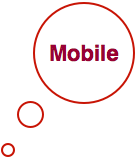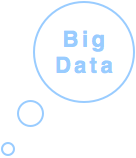Digital Transformation’s Personal Issue reveals personal treatment to be the key to breakthrough customer experience, and it shows how digital social spaces enable Chief Digital Officers to use personal treatment to create more profit. Before they arrive, though, they need to lead their organizations through the Personal Issue. 
The Personal Issue refers to a perceived conflict between empowered customers and profit-starved companies. Digital social technologies are enabling customers to “re-personalize” business and society because their online interactions among themselves are personal, which is changing their expectations of all interactions.
However, businesses resist treating customers personally because they fear cost and inefficiency. They don’t understand the digital social economics of treating customers personally online, at scale.
Meanwhile, the missions of chief digital officers (CDOs) and chief customer officers (CCOs) are creating bold new “customer experience” and profits by using digital technologies to transform organizations, brands and businesses. They will fulfill their missions far more quickly and completely by using the key.
How Digital Transformation’s Personal Issue Developed
Here is a very brief, generalized outline of the ebb and flow of the degree of “personality” in human economies.
 Personal Economy (250000 BCE-1750 CE)
Personal Economy (250000 BCE-1750 CE)
For almost all of human beings’ existence, the economies that formed around people’s activities were personal because people participated in the economy by doing and making things themselves. For most of this era, people worked and made everything with their hands. When they exchanged surplus goods with other people, their personal reputations were at stake. If they were underhanded with their dealings, they would be held accountable by the hunter-gather band or town in which they lived. Where everybody knew everybody, where there was no anonymity, and where people seldom “moved.” People had to balance their individual interests with others’ interests.
 Impersonal Economy (1750-2000 CE)
Impersonal Economy (1750-2000 CE)
The industrial revolution mechanized work on a grand scale and produced unprecedented wealth because machines did the work while people operated or fixed the machines. The power of mechanizing work deeply imprinted people’s imaginations and core beliefs. It was so powerful that people—and the organizations and societies they built—applied it everywhere possible, to agriculture, communications, education, entertainment and countless others.
However, a side effect of mechanization was depersonalization of the economy, organizations and, arguably, interactions among people. People and organizations put machines to work everywhere: factory-produced food, interminable phone trees, streaming porn and ill-fitting clothes.
Depersonalization happened gradually and, when it created friction, people protested, but they endured it for the (low) price of the good. But they didn’t like it. They felt they had no choice.
 Repersonal Economy (2000-present)
Repersonal Economy (2000-present)
People now have a choice. Digital networked technologies have been available in many parts of the world since the 1990s, but it is digital social technology that has changed the game. This class of technology has simple interactive features that enable people to analyze, joke, criticize, love, flirt and slam anything and everything in full view of their friends and everyone else, using text, photos, audio, video and anything else they can hack.
Digital social enables people to act much more personally, but it’s also multiplied by network and annuity effects. It’s a new synthesis of humanity, digitized. Above all, it is personal.
“Repersonalization” is challenging business and society assumptions. People are repersonalizing organizations, business and the economy by interacting with each other, as individuals (brands interact with demographics, not people). In most matters, people prefer to be related to as individuals by other people, not machines (machines have no will, so they cannot be personal). And people relate to other people as individuals by default.
Digital social technologies enable people to relate en masse. Relating can mean many things, but let’s focus on the core: being heard and responded to as individuals. People with unique interests, using digital social technologies, can self-organize, interact and relate to each other about any thing, any time. Personally. This is changing people’s expectations of all interactions.
Organizations, however, don’t want to get personal because they exist to provide efficiency, and, prior to digital social technology, there has been a trade-off between personal treatment and profit. Organizations are very threatened by exceptions to procedures, and people are brimming with exceptions because they want to be treated as individuals. However, people are less tolerant of impersonal treatment, and they respond very favorably to personal treatment by organizations. This is the heart of the Personal Issue.
Getting personal is the master key to the new “customer experience” castle.
How CDOs Can Use the Personal Issue to Advantage
There is consensus among analysts, consultancies, practitioners and executives that the competencies that CDOs must develop in their organizations are social business, mobile, big data & analytics and ecommerce/omni-channel, so these correspond to the competency centers in the Chief Digital Office—and to the recommendations here.
Social Business

The surprising economics of serving people online
In digital social venues that have helping cultures, several things happen that change the economics of caring for people personally:
- One of human beings’ most gratifying experiences is being heard and cared for by other people. Moreover, their gratification is usually increased when they are served in public, which is called social grooming. Someone calling customer service to get help on rebooting his set-top box may be mollified, but his personal satisfaction is greater online when other people see and sympathize. Interactions are often seen by 100-1000x more people.
- Research has shown consistently that, among people in groups, generally 10% of the group interacts while 90% of the group participates vicariously, by observing.
- When a strong community develops, people help each other because they have similar interests and complementary knowledge. They like to help others because they feel good and boost their status.
- When these caring interactions are digital, other people can find and “reuse” them.
- Digital caring interactions include the individual social context of using products of which organizations are ignorant.
When organizations care for people online, they offer satisfaction to 100% by serving the 10% of active people (network effect). And they create digital artifacts that can be reused (annuity effect). The trade-off between profit and treating people personally has greatly weakened.
Using social business to provide breakthrough customer experience
Social business is the most personal of the competencies because its context is people interacting personally, so it is the critical factor in providing breakthrough customer experience. It’s even more powerful when you realize it can be used to discover and validate what customers consider to be “breakthrough experience.”
CDOs can only tap the full power of social business when they pursue deep culture change and show teams how to put the customer first. People feel it when they are considered first. Most organizations pay lip service to “caring,” but they still have utilitarian attitudes toward customers and put profits first. They are not trusted and will lose more trust over time. Those that do not make this shift and meet customers’ changing expectations will be shunned.
When social business is practiced according to a robust social business strategy, interactions are focused, authentic, impactful and cumulative, and organizations quickly develop deep insight into customers’ desired outcomes. They learn how customers try to use products and services to have these outcomes. Best-in-class social business initiatives focus on helping customers attain outcomes rather than promoting brands or products. This is walking the walk.
When a business shows that it cares about individual customer outcomes more than selling product, consistently, in digital public, it develops unprecedented trust. Customers prefer it and its products, and they recommend it to their friends. A key trend in IBM’s study of 15 retail markets was that customers were spending more at trusted retailers (and less at others). And organizations invoke the network and annuity effects.
Social business is usually the fastest and least costly digital competency to develop, so it is ideal for improving results in the other three. Lastly, social business is distinct from social media, which is usually focused on marketing, promotion and entertainment. Social business requires higher order awareness and social skills.
Mobile
 Mobile can be a powerful customer experience enhancer in two dimensions: it can empower customers (and employees serving customers in stores) with apps on mobile devices, and it can provide extensive behavioral data on customers’ activities since it tracks what they do, where they do it and when.
Mobile can be a powerful customer experience enhancer in two dimensions: it can empower customers (and employees serving customers in stores) with apps on mobile devices, and it can provide extensive behavioral data on customers’ activities since it tracks what they do, where they do it and when.
“Mobile” usually refers to smartphones and tablets, but it’s far more than that because all man-made objects are becoming “smart.” They increasingly have individual identities, sensors and can interact with people or other devices via the Internet or other networks. Two useful terms for smart devices are Internet of Things and ubiquitous computing. Here’s an overview of both.
For the next 2-3 years, smartphones, tablets and mobile computers will be most relevant to customer experience for most organizations. Since the best customer experience is personal, CDOs should ask their teams to begin with user experience. “What are our most important customers doing when they use mobile devices? How can we empower them to attain the outcomes they want?” Do not start with, “Let’s develop an app that…” That’s leading with technology, and it usually leads to mediocre results.
Many organizations have mobile versions of their websites, several apps for smartphones and tablets and mobile data tracking programs that seek to tie mobile information to customer records.
However, gathering and using mobile information on customers and prospects is tricky, as retailers are discovering with their in-store customer tracking programs, which use mobile devices to track people, often without telling them. This reflects an impersonal attitude towards people. CDOs should lead their teams to adopt personal, considerate and empathic attitudes towards customers.
When organizations understand what customers are trying to accomplish, they can ground tracking programs in serving customers first, while being very transparent with their intentions. People have repeatedly shown that they will share private information with trusted organizations when doing so helps them get something they want.
The way in which CDOs approach initiatives is as important as what they do. Each interaction with a customer is an opportunity to increase trust, but it’s often lost in the push for profit. That is maladaptive, and CDOs must keep it foremost in mind and create a culture of increasing trust with customers.
Lastly, CDOs can use social business to study high-impact customers, develop understanding of what their desired outcomes are and validate that understanding, quickly and inexpensively. Since it includes data from all digital interfaces, it shows how people use mobile and for what. This helps teams to select and prioritize mobile initiatives.
Big Data & Analytics
 Big data & analytics can add to customer experience by organizing and delivering customers’ individual data to employees who then “know” customers better. Big data & analytics are two separate but related disciplines. Analytics has been practiced for decades. I.T. departments gather the organization’s (structured) data on customers, and internal customers request reports that draw conclusions from the data. Cloud computing and huge advances in analytics software have dramatically improved analytics capabilities: the cloud enables organizations to buy computing power by the transaction or the second, so they no longer need to build their own data centers. Crunching all the data is very computing-intensive.
Big data & analytics can add to customer experience by organizing and delivering customers’ individual data to employees who then “know” customers better. Big data & analytics are two separate but related disciplines. Analytics has been practiced for decades. I.T. departments gather the organization’s (structured) data on customers, and internal customers request reports that draw conclusions from the data. Cloud computing and huge advances in analytics software have dramatically improved analytics capabilities: the cloud enables organizations to buy computing power by the transaction or the second, so they no longer need to build their own data centers. Crunching all the data is very computing-intensive.
Big data refers to an explosion of unstructured data from many sources: digital social data, smart device data, mobile data, and public open data are only a few sources. Big data & analytics is a back-house activity in which the organization gathers, organizes and uses data to “make better decisions.” As with mobile, however, the ethos of the organization is critical. CDOs must ask themselves, “Is our primary use of this information to increase profit at the expense of the customer? Or, is our primary impulse to empower customers, win their trust and increase profit—in that order?” In most companies, it is the former.
Big data & analytics put the concept of privacy under the spotlight, and CDOs should be very conscious here. Expect many more cases of backlash against organizations like Target, which knew a teenager was pregnant before her parents did.
Big data & analytics is a resource-intensive proposition in most cases. People, processes and technologies have to be developed and integrated to make programs work. Lean data approaches can provide surprising value, but usually the organization can add the most unique value to customers when it combines internal data with external—because internal is proprietary. This requires high investment.
CDOs can mitigate the risk of big data & analytics investments by using social business to develop robust understanding of customer experience before they invest. They can create and validate understanding of customers’ desired outcomes using social business. Then CDOs can avoid expensive big data projects that add some value but aren’t high-impact for customers.
Ecommerce
 Many websites provide poor customer experience and frustrate customers, so there is much room for improvement. In most cases, ecommerce refers to the Web/computer interface to the organization’s website, whether computer or mobile web (mcommerce).
Many websites provide poor customer experience and frustrate customers, so there is much room for improvement. In most cases, ecommerce refers to the Web/computer interface to the organization’s website, whether computer or mobile web (mcommerce).
For CDOs, however, ecommerce is a big target for transformation, and omni-channel is an excellent reference point, even for organizations that don’t have transactional websites. Its goal is enhancing customer experience by accommodating customers who use different interfaces to interact with organizations (whether buying or not). Customers prefer organizations that can interact the way they want, when they want.
Ecommerce/web operations have other unique considerations for CDOs. They usually have large budgets, they are the most legacy, and they involve many vendors. Moreover, most ecommerce customer experiences result from site functions that were designed to serve the organization, not customers. Functions are grounded in impersonal beliefs, so they are out of place in the new personal business world. Transformation is critical and should be top of mind to CDOs.
There are intriguing ways to use an agile approach to transformation, and social business is invaluable here. For example, CSRA’s analysis of competing websites during client work regularly shows that websites that integrate customer voices (via digital social data) with ecommerce sites outperform. The key is to evolve ecommerce to be more balanced between the need to sell and the desire to serve. The key is to use every transaction as an opportunity to interact and increase trust.
Using a more personal approach to ecommerce often means adopting an ecosystem mindset and ratcheting back the hard sell approach, which often involves fake-looking stock photos and messaging that tries to “convert” customers (make them buy). This is a losing game in 2013. For example, most websites say how much they “care” about customers, but they have little credibility because they are impersonal.
Get personal. On your ecommerce site, republish links to interactions in which your employees are serving customers using products like those on the page. Organizations say they care but no one believes them due to their site design. Now, organizations can show they care through their actions in public.
As a customer yourself, which would you find more credible, stock photos or people like you getting satisfaction?
Recommendations for Embracing the Personal Issue
- Trust is the elephant in the room. You have undoubtedly noticed that organizations worldwide, from government and banks to food producers and sports “heros,” have lost trust with people due to widespread corruption. The reasons for this are beyond the scope here, but smart CDOs will recognize the Zeitgeist and focus their initiatives on interacting with people to increase trust. People trust interactions in public digital social venues that organizations don’t control. This is a great opportunity to show people they care. Telling people is old school and ineffective.
- When organizations use social business to build trust with high-impact customers, they also win permission to gather and use customers’ mobile and other data. Consistently caring for customers in public is the fastest way to build trust.
- Personal Individualized Experience is a deeper dive into breakthrough customer experience and how the four competencies can address the chasm of trust between organizations and customers.
- It can be helpful to think about improving customer experience along two vectors: the Pleasure Vector shows how gratified a customer feels when s/he is heard and responded to as a person. This is the focus of social business. The Efficiency Vector indicates how much the organization diminishes the friction customers feel when interacting with them. Big data, mobile and ecommerce move mostly along the Efficiency Vector. More about both in The Big Omni-Channel Trap.
- In maintaining the Chief Digital Office, I review 100s of pieces of thought leadership on digital transformation per week. Although literature is intelligent and well intentioned, it harbors industrial principles, and it overlooks the Personal Issue. This is understandable because analysts, consultancies et al are themselves organizations with limited experience using social technologies to serve people (listening, responding in public). Literature therefore guides CDOs to use a mechanized approach to transformation.
- Get more detail on the new link between customer service and marketing in Customer Service Is the New Marketing.
- For a surprising case study on how serving people energizes culture and profit, see Giving Is Smart Business.
_____ Image credit: “Head Scratcher,” thanks Open Clip Art!

[…] To complete the picture, we have to touch on how organizations’ relationships with people are transforming, so we can fully appreciate the role of social business. In the last three centuries, people have traded personal attention and service for more product at lower price. The small-town merchant’s care and attention vanished in favor of huge, impersonal products and organizations with unparalleled selection and low prices. People voted with their pocketbooks for low product/price over personal service and product. But they didn’t like to be treated as segments, demographics or psychographics. Dive deeper in Digital Transformation’s Personal Issue. […]
[…] in terms of how we see ourselves and, therefore, how we see the world. I argued in “Digital Transformation’s Personal Issue” that digital social technologies are enabling people to “repersonalize” the economy […]
[…] in terms of how we see ourselves and, therefore, how we see the world. I argued in “Digital Transformation’s Personal Issue” that digital social technologies are enabling people to “repersonalize” the economy […]
[…] when they want. By listening and responding to each other in digital social venues, they are re-personalizing interaction and changing their expectations of businesses, government and other institutions. They vehemently […]
[…] Conventional marketing is imbued with outdated assumptions. Mass communications with big numbers is one example: because digital social allows groups to self-organize around causes and use cases, interacting with niche groups that correlate strongly with brand or product value propositions is a new way to engage and sell more at higher margins. But here’s the thing: customers have moved away from the product focus to emphasizing their own experiences of using products to create personally meaningful outcomes. CMOs need to move with them, and that requires them to help customers to attain their outcomes, while being observed by many more customers and prospects. Over time, this shows brands’ relevance and care. Customers want to buy from them because they show they care. It’s a delightfully efficient way to build sustainable profits. To drill down, see Digital Transformation’s Personal Issue: It’s the Key to Customer Experience. […]
[…] This is the secret of developing developing a new level of profit in the digital social age. See Digital Transformation’s Personal Issue to drill […]
[…] For a deeper dive into how people are repersonalizing the economy, see Digital Transformation’s Personal Issue. […]